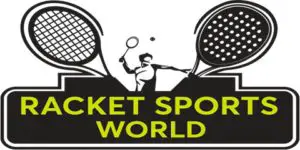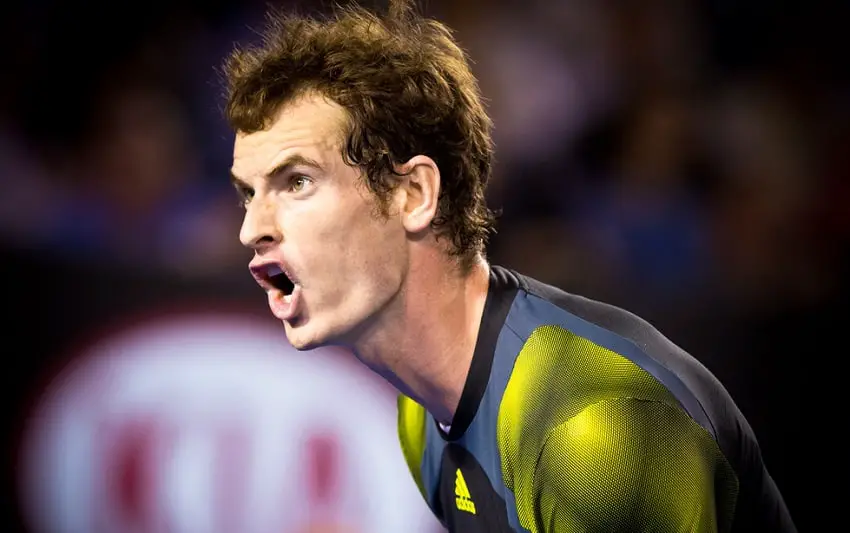In recent times we have been asked a few times about the hindrance rule in tennis and when is it implemented. In the article below, we try to explain what hindrance in tennis means and when is it implemented.
At the 2023 Wimbledon, Novak Djokovic was seen gesticulating at the chair umpire for being penalized a point because of a ‘Hindrance’ call from the umpire.
That came in the fifth game of the second set of his semifinal against Jannik Sinner (which he would eventually go on to win) when Djokovic stretched to get to an almost-unreachable ball from his opponent.
Not only did he reach it but also managed to get it across as what most thought was a winner. And while doing so, he let out a huge shriek of delight.
The umpire did not take too kindly to that and called hindrance, awarding the point to Sinner.
There is another instance where something opposite happened.
During the 2022 WTA San Diego Open final, Iga Swiatek received some heavy criticism for waving her hands on the net while her opponent Donna Vekic was preparing to play a shot during an intense rally in the second set.
Vekic eventually won the point with a cross-court winner, but Swiatek drew flak from critics who saw it as a deliberate attempt to distract the Croatian.
As a result, many thought the hindrance rule should have come into play and the point should have been awarded to Vekic at that very moment.
Twitterati even pulled out footages from Swiatek’s past matches, where she was seen using the same gesture — waving hands at her opponents on the net while they prepared to play a shot.
While she has escaped penalty so far, she did apologize to Vekic for her action after lifting her eighth title in 2022. Swiatek tweeted, “This is the best prize/trophy ever! Thank you San Diego for an amazing (cloudy) week and this unique vibe. I love it here.
And congrats @DonnaVekic for your amazing run! And sorry for waving my hands at the net.”
🏄♀️This is the best prize/trophy ever! Thank you San Diego for an amazing (cloudy😥) week and this unique vibe. I love it here.
And congrats @DonnaVekic for your amazing run! And sorry for waving my hands at the net. pic.twitter.com/SLwGiVM4zr— Iga Świątek (@iga_swiatek) October 17, 2022
She had received similar criticism during the U.S. Open against Lauren Davis. So the question remains was it hindrance or not?
Here we take an in depth look at the hindrance rule in tennis.
Also Read:
Table of Content
Defining Hindrance in Tennis
Hindrance can be defined as any act, deliberate or unintentional, that has the ability to distract an opponent/s while they are winding up to strike the ball.
Had the player not been distracted, the point could have been played differently and more effectively. But the hindrance forces them to either miss or play the ball in a manner that is less effective
If it is a deliberate attempt from a player to distract an opponent, the latter can claim hindrance and receive a point.
In case it is an unintentional act, eg. the ball hits a bird flying over the court before reaching the opponent, in that case the hindered player is entitled to a let and the point is replayed.
What Can Be Construed as Hindrance in Tennis?
Here we take a look at different scenarios, which can lead to hindrance:
Talking
It’s important for players to remain quiet when a point is being played.
Any word blurted out from a player’s mouth after they have hit a shot towards an opponent is seen as a deliberate effort to shake the opponent’s focus.
Therefore it constitutes hindrance. The opponent must leave the ball and claim hindrance. A point is awarded to them.
In doubles, if a player after striking the ball asks his partner to prepare for a certain shot or take a certain position it is deemed as hindrance.
However, doubles partners can talk among themselves if the ball is headed towards them and it’s their chance to strike.
The 2011 U.S. Open women’s final witnessed an incident that falls in this category:
Serena Williams was down a set and faced a break point in the second against Sam Stosur. Williams hit a thunderous forehand return and screamed “come on” as she thought she had won the point.
But chair umpire Eva Asderaki thought that Williams said “come on” while Stosur was chasing the ball to send a return.
She called it hindrance and awarded Stosur the point and the game. The Aussie went on to win the match, while Williams lashed out at Asderaki. Was the right call made? Here is the footage, decide for yourself:
Four years later, Serena Williams lost a point in the Australian Open final against Maria Sharapova.
While serving in the second set, Serena seemed to have called out “come on” on one of the points. The umpire immediately called it hindrance and Serena lost the point. Here is what happened:
Body Movement
A player can move around the court when the ball is live, but just like they are not allowed to talk, they are also not allowed to make any gestures that can put off an opponent. E.g. waving at an opponent while the ball is traveling towards their side of the court is seen as hindrance.
Also, some players have a tendency to distract with their racket. They tap the court after sending the ball towards their opponent or they may sometimes tap themselves with their racket after hitting the ball.
This is seen as hindrance as well.
One such incident happened during a Maria Sharapova versus Maria Kirilenko match in Indian Wells in 2012.
During a rally in the second set, Kirilenko tapped her racket against the court a few times after sending the ball in Sharapova’s direction.
Chair umpire Marija Cicak immediately called it hindrance and awarded the point to Sharapova.
Take a look at the incident below:
Also Read:
Grunting
Grunting has been a matter of debate for decades, but despite its detractors it still remains a part of the sport.
However, if grunting or loud noise play a part in the outcome of the point then they are seen as hindrances. Only an official can call these actions hindrances and they may either order a let to be played or a loss of point, depending on whether the offending player was warned previously.
One such incident happened in 2016, during a Challenger level match between Robin Haase and Gonzalo Lama in Prostejov, Czech Republic.
Both players were engaged in a rally, with Lama grunting each time he returned the ball while Haase stayed quiet while he hit his shots.
Then suddenly Haase let out a long grunt as if to mimic Lama. That grunt lasted till the time ball crossed the net towards Lama’s court and the umpire immediately called it hindrance.
Haase argued but eventually lost the point.
Here is the link to the incident:
Difference Between Intentional and Unintentional Hindrance
If a deliberate act of a player hinders his opponent from playing a shot, then the latter is awarded a point.
But in case the player is hindered by either an unintentional act of the opponent(s), or something outside the player’s own control, then the point can be replayed.
However, this does not include permanent fixtures like the officials’ chairs, walls, fences, stands, spectators etc. So if a ball hits a permanent fixture after landing on the correct court then the player who struck the ball gets the point and the opponent cannot claim a hindrance.
So what constitutes an unintentional hindrance?
- Suppose a player during a point has been stung by a bee and the player has to pull out of the rally due to that, the referee will see it as hindrance and the point will be replayed.
- In another situation, there could be a bird flying over the court and the ball hits it and changes its trajectory, that again is an unintentional form of hindrance.
- While players can control the noise that they make they have little control on the noise that comes from the spectators, so if a player is distracted by an “out” call that came from the crowd or any other noise from the fans, then they cannot claim hindrance. But suppose a fan comes charging on the court then that is hindrance. The players can stop playing and the point is replayed.
- If a player’s hat or another accessory fall off during a point, then the opponent can claim let as it is unintentional hindrance.
- In another case there could be a ball or another object already present on the court when the point started. That is not seen as hindrance. But in case another ball or object comes into the court during the point being played then that is seen as hindrance and the point needs to be replayed.
How Can One Claim Hindrance in Tennis?
According to the ITF Rules only the player who is being hindered can stop a point and claim a hindrance. If a player is of the opinion that an opponent is being hindered and he/she stops the point, then it’s them who lose the point and not the opponent.
Also, a hindered player is only entitled to a let if it’s possible for them make a shot. In a case when they can’t even reach a ball they can’t claim a let.
Most importantly, in order to claim a hindrance, a player may make a quick decision and pull out of the shot. If they go for the ball and miss it and then claim hindrance that could be a late call.
Final Words on Hindrance in Tennis
So in a nutshell, the hindrance rule prevents a player from earning a point through unfair means.
If they try to distract their opponent deliberately they are penalized. Also allowing a player a let for unintentional hindrance gives them a fair opportunity and they don’t lose points for reasons that is beyond the control of the two players.
So leaving you with this footage from a Daniil Medvedev versus Alexander Bublik match at the Canadian Open in 2021. The umpire thought it was hindrance but the ball clearly was traveling towards Medvedev when he said “sorry.”
So, we think it shouldn’t have been called hindrance. What’s your take on that?


